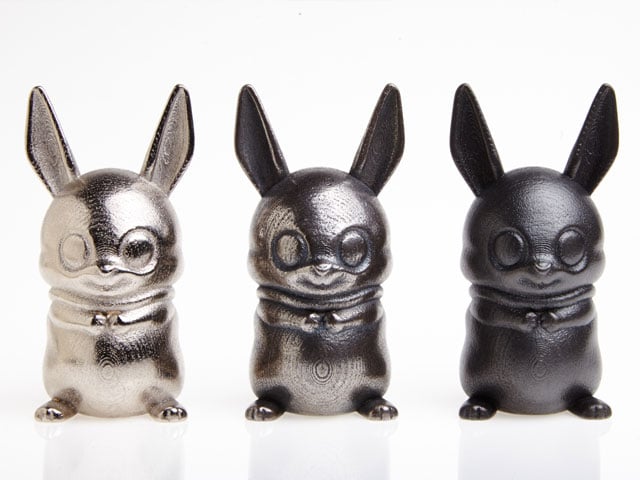Deprecated: WPML_Term_Element::__construct(): Implicitly marking parameter $wpml_cache as nullable is deprecated, the explicit nullable type must be used instead in /home/highsec.org/public_html/wp-content/plugins/sitepress-multilingual-cms/classes/translations/class-wpml-term-element.php on line 18
HighSpace
Materials Explainer: 3D Printing in Steel


3D printed metal has gotten a lot of attention lately, but because the process of 3D printing in metals can take many forms, it’s largely misunderstood. In future Materials Explainers, we’ll talk about how we use 3D printing for cast metals and 3D printed aluminum. Today, we’ll tackle steel.
So, how does Shapeways create your 3D prints in steel? Shapeways works with ExOne, our partner in Pittsburgh, which was once the heart of the American steel industry. Their metal 3D printing process involves several phases. First, powdered 420 Stainless Steel gets sintered together with glue, layer by layer, in the shape of your 3D design. At this stage, the material is fragile, similar to wet sand.
Then, that sand-like steel-and-glue amalgam goes into a furnace, where bronze infuses the steel, replacing the glue, hardening the steel and creating a lasting bond. (Your products will contain about 60% stainless steel and 40% bronze.) Finally, our partners at ExOne polish your product. Beyond the Stainless finish, there are seven other options, from a matte look to polished nickel or gold.
If you want to see their 3D printers in action, watch this video:
Steel has proven to be a popular for 3D printed jewelry, sculptures, and functional parts, but it’s not right for everything. People associate stainless steel with kitchenware, but our 3D printed steel products are not foodsafe. And this process cannot create objects with interlocking parts.
Chuck Stover says he was “amazed by the heft and the fidelity to my model“ when he ordered his first steel 3D print from Shapeways, back in 2010. Stover’s Shapeways store, Made by Wombat, specializes in dice, and he recommends using sans serif fonts on smaller prints.
Other advice from Stover based on seven years of experience 3D printing steel with Shapeways:
- Be prepared to order several iterations of your model before you perfect it. If you have embossed or raised details, you may be surprised at how the polishing process affects them.
- Always order a prototype of anything you are planning to sell in steel. Then you will know it prints correctly and you can photograph it for your product page. If a prototype is too expensive for you, it might be for your customers too. Try printing smaller or with thinner walls.
- Be prepared for color variations in the finished product, especially in the Stainless finish. Sometimes the bronze used to infuse the steel will be more apparent.
- If you are designing a ring or jewelry that touches skin, give steel a pass. Steel can react to sweat, affecting both the product and person wearing it. A product designed for brass can be printed in a variety of metals.
What have you made in steel? Share your projects in the comments below for a chance to be featured on the blog.
